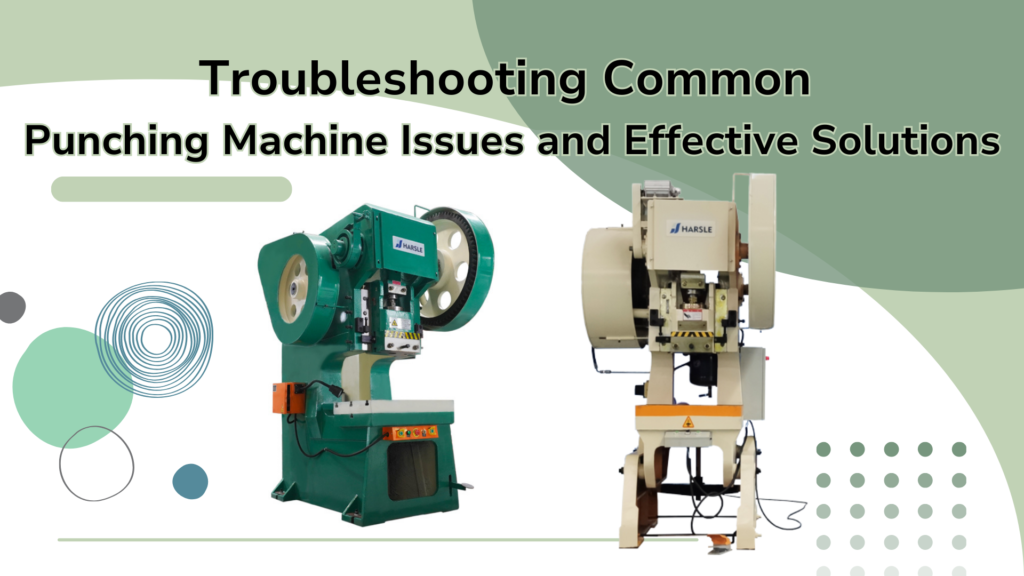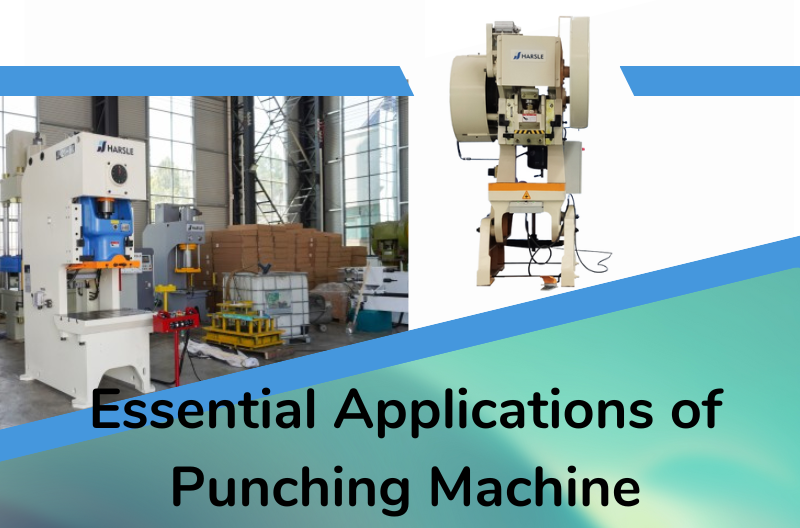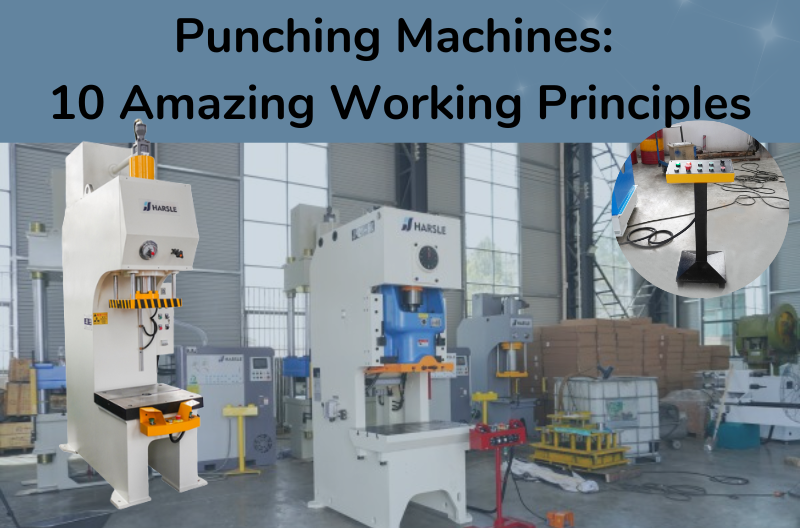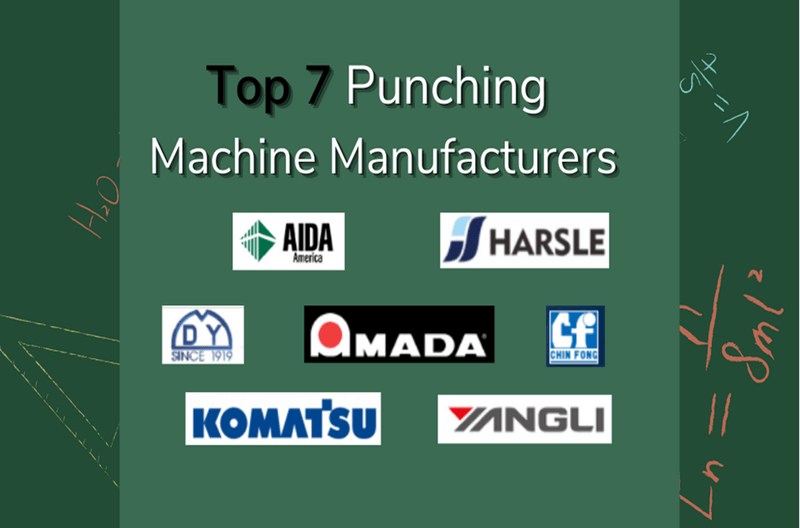How to Effectively Solve Punching Machine Overload Issues

Punching machines, a critical part of metal fabrication and manufacturing, are designed to deliver precise cuts, holes, and shapes in materials like sheet metal, plastic, and composite materials. While these machines are durable and efficient, they can experience performance issues, with overload being one of the most common and disruptive problems. Overloading a punching machine can lead to a range of issues, including damage to mechanical components, reduced machine life, and even safety hazards.
In this article, we will explore the common causes of punching machine overload, how to detect and troubleshoot them, and the best solutions to prevent overloading in the future. Whether you’re an operator, maintenance technician, or factory manager, understanding how to resolve and prevent overload issues is crucial to maintaining the optimal performance of your punching equipment.
1. Understanding Punching Machine Overload
Before diving into the solutions, it’s important to understand what punching machine overload means. Overload occurs when the punching machine is subjected to excessive force or stress beyond its designed capacity. This could happen due to overworking the machine, improperly adjusted settings, or even using the wrong material thickness.

The overload condition can strain the mechanical, electrical, and hydraulic systems of the punching machine, causing problems such as:
- Reduced punching accuracy
- Excessive wear on components
- Increased downtime due to repairs
- Potential safety hazards to operators
Overloading is not just about the mechanical stress on the equipment; it can also affect the overall efficiency of production and result in costlier repairs if not addressed promptly.
2. Common Causes of Punching Machine Overload
There are several reasons why a punching machine may experience overload. Below, we highlight the most common causes and how to recognize them:
a. Incorrect Material Thickness
Using materials that are too thick for the punching machine can cause excessive strain on the machine’s components. Every punching machine has a rated capacity, and exceeding this capacity can result in overload. For example, punching thick sheets of stainless steel on a machine designed for thinner materials may result in the machine overloading.
b. High Speed and Feed Rate
Punching at higher speeds and feed rates than recommended can increase the strain on the machine. If the machine is forced to punch too quickly, it might not be able to handle the stress, leading to an overload situation. Operators need to understand the speed and feed rate parameters specified by the machine manufacturer.
c. Poor Maintenance
A lack of routine maintenance can cause friction and other mechanical issues that lead to overload. Components like the punch die, hydraulic system, and motor need to be checked regularly to ensure they are working properly. Clogged filters, worn-out parts, and lack of lubrication can cause the system to work harder than necessary.
d. Improper Machine Settings
Improper adjustments, such as incorrect stroke settings, can lead to excessive load on the machine. Setting the punching machine for a deeper or more complex punch without accounting for the material’s resistance can strain the system.
e. Hydraulic System Issues
The hydraulic system plays a crucial role in punching machine operation. If the hydraulic pressure is not properly calibrated or if the hydraulic fluid levels are low, it can result in machine overload. Hydraulic system failures can also cause the machine to exert too much force, leading to overload.

3. Detecting Overload in Punching Machines
It is important to detect overload issues early to prevent further damage to the punching machine. Here are some common signs that indicate an overload:
a. Unusual Sounds
Hearing loud or unusual noises such as grinding, screeching, or clanking can be a sign that the machine is under stress and struggling to perform its functions properly. These noises may indicate friction between moving parts or other mechanical issues.
b. Inconsistent Punching Results
If you notice that the punches are not consistently clean or accurate, it could be a sign that the machine is overloaded. The punching force might not be uniform, leading to irregular cuts.
c. Decreased Machine Speed
When a punching machine is overloaded, it may begin to slow down. If you notice a decrease in the machine’s punching speed, it could be because the system is struggling to keep up with the set parameters.
d. Overheating
Excessive heat generated during operation can be an indicator of overloading. If the machine is running too hot, it could be due to excessive friction, poor lubrication, or overworked hydraulic systems.
e. Visual Damage
Physical signs such as cracked punch dies, bent tooling, or distorted machine frames may be evident in machines experiencing overload conditions. These issues need to be addressed immediately to avoid further damage.

4. How to Solve Punching Machine Overload
Once an overload situation is identified, it’s important to resolve it immediately to prevent damage and ensure continued smooth operation. Here are the key steps to solve punching machine overload:
a. Adjust Machine Settings
Ensure that all machine settings, including stroke length, feed rate, and speed, are set to the recommended parameters. Check the manufacturer’s manual for the optimal settings for the material and thickness you are working with. Adjusting the settings can reduce the load on the machine and prevent overloading.
b. Inspect and Replace Worn Components
Overloading can accelerate wear on critical components, including punch dies, hydraulic valves, and bearings. Regular inspections can identify worn-out parts that need replacing. Ensure that all mechanical components are properly lubricated and cleaned to avoid friction and strain.
c. Reduce Material Thickness
If the material being used is too thick for the punching machine, consider switching to a thinner material that falls within the machine’s rated capacity. Alternatively, adjust the punching speed and feed rate to accommodate the thicker material, or use a punching machine with a higher tonnage capacity.
d. Calibrate the Hydraulic System
Make sure that the hydraulic pressure is within the recommended limits. If the hydraulic system is malfunctioning, check for leaks, low fluid levels, or other issues. Ensure that the hydraulic fluid is replaced regularly to maintain smooth operation.
e. Implement Routine Maintenance
Establish a regular maintenance schedule to ensure that all parts are inspected, cleaned, and lubricated. This includes checking the hydraulic system, punch die, and motor to ensure that they are functioning at optimal levels. Proper maintenance can prevent most overload problems before they happen.
f. Operator Training
Ensure that operators are properly trained in the correct usage and operation of the punching machine. Providing adequate training can reduce the likelihood of incorrect settings and operation, which are major causes of overload.

5. Preventing Punching Machine Overload in the Future
Preventing future overload issues requires a combination of proper machine usage, maintenance, and operator education. To avoid future overloads, implement the following strategies:
a. Install Overload Protection Systems
Some modern punching machines come with overload protection systems that automatically shut the machine down if it exceeds its rated capacity. This feature helps protect both the machine and the operator from the risks associated with overload.
b. Use Proper Tooling
Ensure that the right punch dies and tools are used for the material and application at hand. Using the wrong tooling can cause unnecessary stress on the machine.
c. Upgrade Equipment
If your current punching machine is frequently overloaded, it may be time to upgrade to a more powerful machine with a higher tonnage capacity. This will ensure that the machine can handle the workload without overloading.
d. Regular Performance Monitoring
Monitor the performance of the punching machine regularly through performance metrics such as cutting speed, accuracy, and material wastage. Tracking these metrics helps identify any signs of overloading before they become a serious issue.

Conclusion
Punching machine overload is a common yet serious issue that can result in significant downtime, increased maintenance costs, and even pose potential safety risks. When a punching machine is overloaded, it can lead to excessive wear and tear on components, causing parts to fail prematurely. This can disrupt the manufacturing process, leading to delays in production and a decrease in overall productivity. Moreover, overload conditions may even compromise the safety of operators, exposing them to dangerous conditions, including the risk of mechanical failure or accidents.
Understanding the underlying causes of overload in punching machines is crucial in mitigating the problem. Common causes include improper machine settings, excessive force applied during operation, or the use of materials that exceed the machine’s capacity. Overload can also occur due to improper maintenance, such as neglecting to lubricate moving parts or failure to replace worn-out components. Recognizing the early signs of overload, such as unusual noises, increased vibration, or inconsistent performance, is essential for addressing the issue before it causes significant damage.
To prevent overload issues, manufacturers must prioritize regular maintenance of their punching machines. This includes routine inspections, ensuring proper lubrication, and replacing worn parts promptly. Additionally, ensuring that machine settings are correctly adjusted for the specific material and task is essential in preventing overload. Operators should be properly trained to recognize and avoid overload conditions by understanding the machine’s limits and following standard operating procedures. Proper material selection also plays a key role in preventing overload, as materials that are too thick or hard for the machine can easily lead to stress and damage.
By following these best practices—regular maintenance, correct machine settings, proper material selection, and comprehensive operator training—manufacturers can extend the lifespan of their punching machines, reduce downtime, and improve operational efficiency. Investing in preventive measures not only protects the machine but also ensures a more reliable, cost-effective production process, ultimately enhancing overall business performance.







